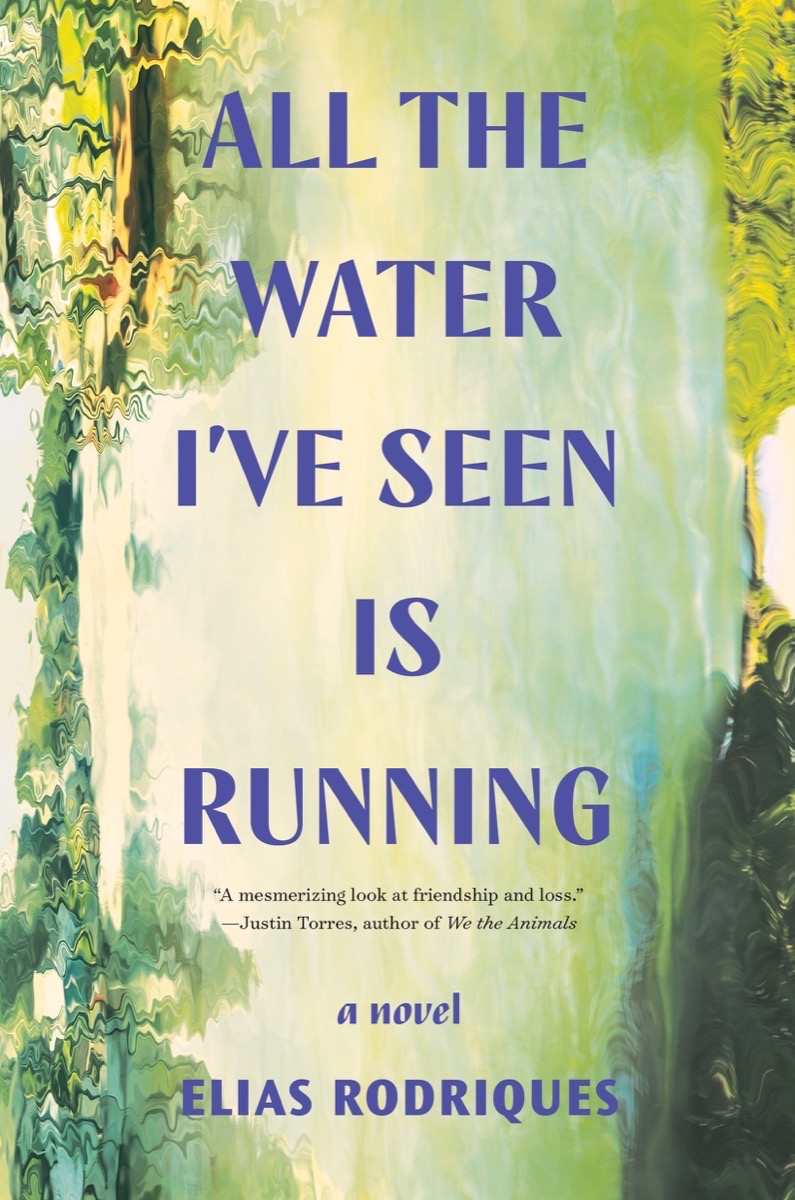 ALL THE WATER I’VE SEEN IS RUNNING: A Novel
ALL THE WATER I’VE SEEN IS RUNNING: A Novel
by Elias Rodriques
W.W. Norton & Company. 255 pages, $26.95
WHEN DANIEL HENRIQUEZ, the protagonist of All the Water I’ve Seen Is Running, calls his mother in Jamaica to report the death of Aubrey, a girl he knew back in high school, his mom reminisces about people in her life who have died, including Daniel’s uncle, who left before Daniel was born. She’s sad but also practical. It is, as she says, “just the price of surviving.” Surviving is its own type of movement, and movement is the underlying theme of this debut novel by Elias Rodriques.
There is movement between the past and present, for example, in the narrative of Daniel, a twenty-something, gay high school English teacher of Jamaican, Lebanese, and Trinidadian heritage. We know that he lives in Crown Heights, Brooklyn, and that he’s dating a man named Virgil, but that’s about all we know about his life in New York. Instead, the Daniel we meet exists mostly in his thoughts and memories, which often go back to the small town that his family finally settled in after moving from Jamaica to the U.S., and the girl, Aubrey, who he once knew, and loved, while living there.
In that town, water was a metaphor for escape. “We lived for water, salt, fresh, and brackish,” he recalls. “We were all waiting for life after high school, after our no-name town in North Florida, so we figured we’d wait by the water.” Water is always in motion, even when contained within boundaries or appearing to be fixed. It only shifts slowly with the passage of time, unless acted upon by some outside force. For Daniel, an on-line news story about the death of Aubrey is that force, triggering an obsession with the past. He worries over his memories while on the subway, while teaching class, while in bed with his boyfriend, conjuring in his mind both the things he remembers and the things he doesn’t know about Aubrey’s life and death. “I felt so strongly about Audrey when I was younger. I keep thinking, Did I ever feel that way about Virgil?”
Daniel’s intense mental aerobics highlight the ways in which separate experiences link together in sequence to form our broader narrative. In this way, All the Water I’ve Seen Is Running poetically manifests a theory of experience that’s reminiscent of psychologist John Dewey. For Dewey, experience is a moving force, powered through a series of ongoing pivots between specific events. Each experience picks up from a previous one and is handed off to the next. As Dewey notes, and many of us learn through living, no one comes to a given experience as a blank slate. Conversely, no one leaves an experience unchanged.
Dewey’s theory has implications for teaching, which is where he famously applied his principles in the real world. Rodriques applies the theory to the understanding of the self. Aubrey’s death and Daniel’s intense desire to know more about it—and about her life during the seven-year gap between the last time they spoke and her demise—set in motion the main events of the novel.
Let me interject that I can relate personally to Daniel’s quest to engage in late-night research for answers, and to his obsessive, imaginative tinkering with past experience. Recently I learned via some Google searching of the death of my own first great crush. He died in Spain in a motorcycle crash, in 2004, at the age of 28. Other than that, I know nothing about his life before the accident or the circumstances of his death. I had not spoken to him in 23 years and was provoked to some on-line sleuthing only because of this book. I had no reason to suspect that he was dead, but I could relate to that kind of emotion that stays with you after a life-changing relationship. Perhaps there is an instinct, even after you’ve lost touch, to hold space open in order to make meaning from such an experience.
As Dewey pointed out, the meaning of our experiences comes in the quality of the reflection that we apply to them. Many of us return to pivot points for strength and understanding, as signposts not only for who we were but also who we might be going forward. As Rodriques observes, this type of reflection on our lives often remains private, existing in spaces that we hold as unknowable and inexpressible, even to those we love in the present.
Unlike the common basketball pivot, however, where one’s direction can be reversed, a Deweyan pivot is always forward. Daniel wrestles with the potentially generative ways his life ahead and his past (including the experiences of his ancestors) might not be isolated experiences at opposing ends of a timeline but instead a continuous narrative of what it means to be Daniel in motion.
Philip Moore is an assistant professor of education at Gratz College in Melrose Park, PA.






